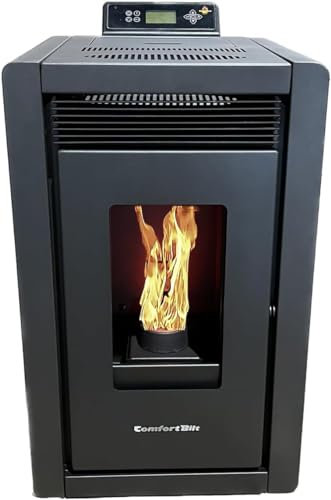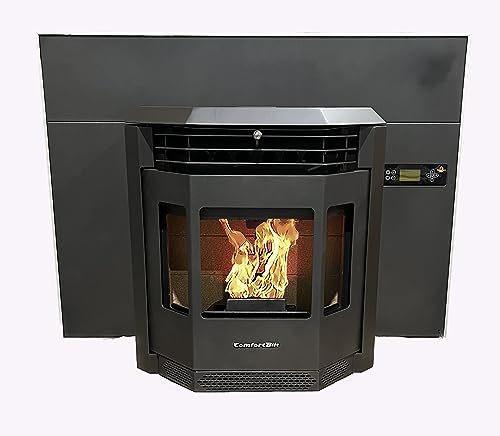10 Things That Your Family Taught You About Ventless Pellet Stove
페이지 정보
작성자 Elisa 연락처 작성일 24-12-05 09:38 조회 233회 댓글 0건본문
 The Benefits of a Ventless Pellet Stove
The Benefits of a Ventless Pellet StovePellet stoves produce heat using pellets, repurposed lumber byproducts that burn with little or no carbon emissions. They're considered to be green because they burn byproducts of renewable sources and consume less energy than wood or gas stoves.
 You'll have to ventilate your pellet stove properly if you want to get the most from it. Employing a professional to install your venting will make sure that it meets local safety standards and codes.
You'll have to ventilate your pellet stove properly if you want to get the most from it. Employing a professional to install your venting will make sure that it meets local safety standards and codes.Eco-Friendly
Pellet stoves have excellent energy efficiency in comparison to traditional wood burning fireplaces. Pellets are renewable and don't produce as much pollution as fossil fuels such as natural gas and petroleum. However, the process of combustion does produce some carbon monoxide and particulate matter which is why it's crucial to clean your stove regularly and exhaust vent system to keep them functioning properly.
Maintaining your pellet stove will ensure that it operates safely and correctly and will give you the best heating performance. Regular emptying of the hopper, as well as cleaning the exhaust and burn vents prevents accumulating ash that can interfere with the flow of air and decrease the efficiency of your stove. Also, ensuring that your stove and chimney are properly ventilated and located at the correct distance and height from the walls of your house will help in preventing dangerous carbon monoxide accumulation.
Venting for a pellet stove can be done via the wall, ceiling or the roof of your home. The type of venting you select will depend on the location of your home's design and preferences. Vertical venting is preferred as it keeps the flue gas warm, which increases the efficiency of the stove. Additionally, it eliminates the possibility of smoke entering your home in the event of power outage.
Venting kits can be purchased for your pellet stove to make installation and ensure the proper operation of your stove. The kits come with a stainless steel flue pipe with insulation that connects the stove on one side, and to your home’s chimney made of masonry on the other. These kits should be installed by an experienced installer to ensure that the stove is safe and compliant with your area's building codes and regulations.
A pellet stove is an excellent option for anyone who seeks a reliable method to heat their home while having little impact on the environment. If you are concerned about the impact of your stove emissions on the environment, consider using alternative fuels like liquid propane gas or biodiesel to heat your home.
Easy to Operate
Pellet stoves are an ideal option for homeowners who want the appearance of wood-burning stoves but don't have the time to clean up ashes and chimneys. A pellet stove furnace stove is a sealed unit with a hopper for the pellets as well as a combustion chamber, and a fan that blows heated air into the room. The stove can be controlled using a remote control or thermostat. The thermostat can be set at an appropriate temperature so that you don't have to keep changing the settings.
Pellets are compressed tightly and then burn extremely hot. They are cleaner than wood-burning stoves as well as fireplaces. They also produce less creosote which could pose a fire hazard. Pellet stoves are easy to use, clean and maintain.
In contrast to other types of fuel, pellet stoves vs wood stoves stoves are self-igniting. A small surface igniter controlled by the circuitry heats up the pellets, causing them to begin burning. The pellets are carried through a tube that is inserted from the burn pot to an exhaust fan, which is able to push smoke and combustible gases out of the stove via a vent. The filtered exhaust is released through the cleanout tee and into the wall, or up and out through the roof according to the installation and local codes.
Most pellet stoves are designed to be direct-ventilated. However, some are also available as freestanding models that can be fitted into a fireplace or placed in a hearth. These can be incorporated into your home's existing venting system, but they're not capable of providing the same level of heating as a stove vented through a chimney.
The hopper of your stove's pellets holds the fuel and is located on the back of the stove. The capacity of the hopper can differ, and you may have to refill it when the fuel is running low. It's recommended that you buy a larger hopper since it allows you to run the stove for longer durations of time between refills.
A circuit board regulates the hopper and blower in addition to other functions of the stove. The circuit board decides the amount of pellets being fed to the burner and the rate of flow of air through the exhaust and hopper fans. The hopper is equipped with sensors to aid in regulating the operation.
Convenient
A ventless pellet stove is a great option if you want to heat your house without having to deal with pellets or a complicated venting. Pellet stoves are powered by compressed wood pellets, which are readily accessible in 40-pound bags. These pellets are usually made from recycled sawdust and wood shavings (which is the reason they are regarded as carbon neutral).
They are very easy to operate, requiring to load them up, set the thermostat, and turn on the fan. The stove will handle the rest, automatically adjusting to maintain the temperature you desire.
Pellet stoves typically use natural convection for room heating, but most models are equipped with what's called a distribution blower, to assist in the process. The blower draws cool air into the stove and then passes it over a heat exchanger located on top of the combustion chamber. The heat exchanger transmits warmth from the burning pellets to the air that circulates inside your home.
Pellet stoves produce very little ash because they burn an unclean fuel. This means that you will have to clean your ash pot or drawer on a regular basis. Modern stoves come with an easily accessible ash drawer that makes it simple to remove and dispose of the ash.
A pellet stove with an emergency power source can continue to function even if the main power source fails. This feature is not free and the backup power source is only good for 8 hours. If you're concerned about a potential power outage you should consider gas stoves instead.
A ventless pellet stove will still require a flue, however, the flue is able to run horizontally to your masonry chimney or through an exterior wall. Installing ventless pellet stoves is much simpler and less expensive since you don't need to run a pipe through the ceiling and out your roof.
Efficient
Pellet stoves consume less energy than other kinds of wood-burning fireplaces and some models are rated as up to 99% efficiency. They do so by using technology to ensure that the pellets are burned completely before exiting the combustion chamber. This is made possible by advances in combustion chamber design and the use of thermostats that can be programmed. These innovations also help to ensure that the heat generated is distributed evenly throughout the house.
Pellet stoves are simple to maintain and produce no or little odor, unlike other fire places with wood burning. You only need to empty and refill the hopper at least once every day You don't have to carry large bags of firewood around or spend time cutting down or purchasing it.
As a heating device, pellet stoves have several additional advantages. They are often cheaper than a gas or wood-burning fireplace and can be incorporated into hot water systems for domestic use to help reduce the cost of your utilities. Additionally, pellet stoves can be used to warm only one room in your home, reducing your heating costs and reducing the amount of fuel needed to heat your entire home.
However, there are a few things to think about before buying a pellet stove. One is that electric powered pellet stoves, meaning they won't work in the event of power outages. This may be a major consideration for homeowners who live in areas that are prone to frequent power outages. Certain manufacturers provide battery backups that could provide you with a few more hours of operation.
Although pellet stoves are incredibly efficient, they do not provide the same amount of warmth as vented fireplaces. This could be a problem for homeowners who have larger homes or live in very cold climates.
To maximize the efficiency of your pellet stove, you must ensure that it is properly sized and maintained. A certified professional can inspect your home and decide on the proper size stove for your particular heating requirements. Homeowners should also clean their stoves regularly and have them professionally cleaned about once a yearly. They should also adjust the settings of the stove to meet their actual heating needs and insulate their homes properly to lower energy usage.
- 이전글5 Killer Quora Answers On Best Travel Pushchair
- 다음글8 Tips To Increase Your Audi A3 Key Replacement Game
댓글목록
등록된 댓글이 없습니다.
